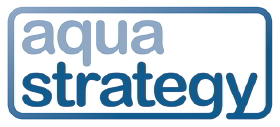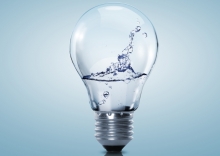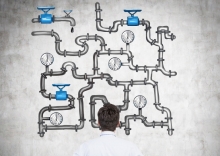Issue:
Recent transformation of the water sector in Ireland has included installation of domestic water meters in more than 60% of properties in a matter of just a few years. Direct water charges to customers have been suspended, but the metering is nonetheless contributing to the leakage reduction efforts of utility Irish Water, and may well be used to support charging for excess use. Keith Hayward spoke with Irish Water metering specialist Kevin Murray, who will be speaking at the forthcoming SMi Smart Water Systems event in April, about the metering transformation and some of the lessons learned.

The water sector in Ireland has been through nothing short of a transformation over the last few years. A national water utility, Irish Water, has been set up to take over delivery of water and wastewater services from local authorities. Traditionally water had been paid for indirectly, through taxes, so another part of the transformation was to introduce direct billing of domestic customers. And on top of this, Irish Water was charged with implementing a nationwide domestic water metering programme from a starting point of no installed meters.
Delivering drive-by meter reading
The scale of change has been controversial, primarily with respect to the introduction of water charges. The government has since decided to suspend these charges. In the meantime, Irish Water is already operating what is a full-scale metering network across the country.
One of the key tasks set for Irish Water when it was set up was to implement the domestic metering programme. Between the middle of 2013 and early 2017, almost 900,000 domestic meters were installed. This represents around 60% of all domestic properties.
‘To put that in context, between the summer of 2013 and January 2017, we went from zero to the UK average for domestic metering,’ says Kevin Murray, Metering Technology & Solutions Specialist at Irish Water. ‘At the peak of that installation programme, we were installing over 45,000 meters per month,’ he adds.
Just as importantly, the fresh start presented by the metering programme meant that modern technology could be deployed, especially in terms of the meter reading capabilities. Murray explains that two meter technologies were selected for installation – Diehl meters for one part of the country, and Itron for the other. Alongside this, a single meter reading technology (Temetra) able to read from both meters was selected, and this is a drive-by AMR (automated meter reading) system. ‘Our reading technology is what integrates the whole lot,’ says Murray.
Murray explains that a fleet of 10-12 vans drives the country over a two month period. Each van picks up on average 2500-3000 meter reads per day, and Murray notes a high success rate for reading. ‘We are getting over 99% of meter readings recovered at each read cycle,’ he says.
Importantly, the readings are not simply a metered value at the time of passing. They include the month-end values for the preceding three months. In addition, they include alarm notifications, such as leak alarms and tamper alarms, and codes indicating meters that can’t be read. ‘It is a far richer data set than would have been picked up by simply somebody going round and individually reading each meter,’ adds Murray.
Current priorities
Having reached the 60% coverage of domestic properties, Murray explains that there is now a focus on non-domestic customers. ‘When Irish Water was set up, it took on the duties of 31 local authorities, and whereas there was not metering on the domestic customers, there was metering of approximately 180,000 non-domestic customers,’ he says.
To read the rest of this article, log in here. New users can register here for free trial access, or subscribe here.






